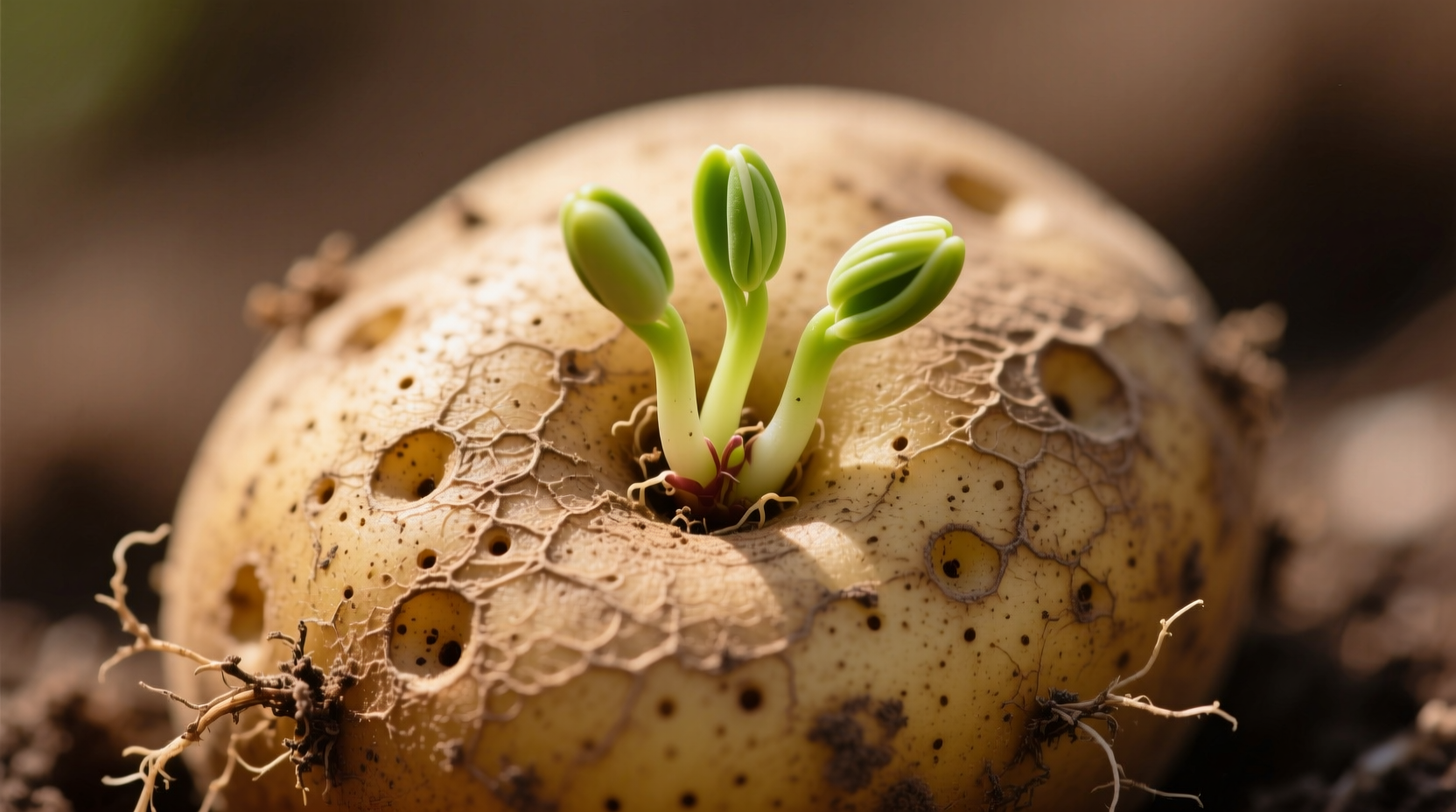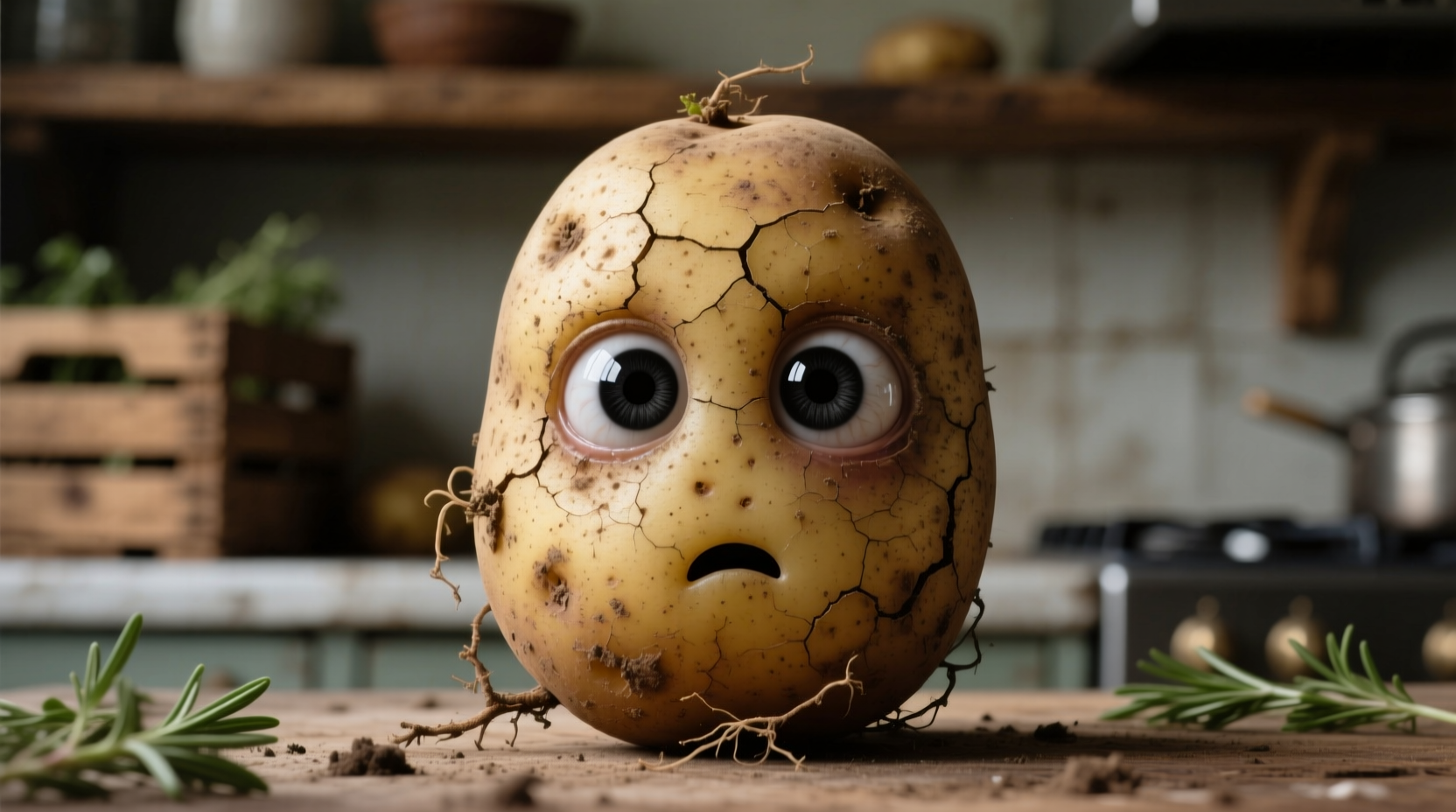Discovering sprouted potatoes in your pantry doesn't mean you need to throw them away immediately. Understanding what potato eyes are and how to handle them properly can save you money and reduce food waste while keeping your meals safe.
What Exactly Are Potato Eyes?
Those small indentations on potatoes that sometimes develop sprouts aren't actually eyes in the biological sense. These "eyes" are specialized buds capable of producing new potato plants. When conditions are right—typically warm and humid—these dormant buds activate and begin to grow.
According to agricultural experts at the University of Idaho's College of Agricultural and Life Sciences, potato eyes contain higher concentrations of natural defense compounds called glycoalkaloids. While these compounds protect the potato plant in nature, they can cause digestive issues in humans when consumed in large quantities.

When Sprouted Potatoes Become Unsafe
Not all sprouted potatoes require disposal. The safety depends on several factors:
| Condition | Safe to Eat? | Action Required |
|---|---|---|
| Small sprouts, firm texture, no green | Yes | Cut out eyes and 1/4 inch around them |
| Long sprouts, slightly soft | Maybe | Remove all sprouts and green areas; check for bitterness |
| Extensive sprouting, soft/mushy texture | No | Discard entire potato |
| Significant green discoloration | No | Discard entire potato |
Safe Preparation Techniques for Potatoes with Eyes
Professional chefs routinely salvage slightly sprouted potatoes by following these precise steps:
- Assess firmness - Gently squeeze the potato. If it feels solid with only minor give, it's likely still good.
- Remove all sprouts - Use a paring knife to cut out each eye and the surrounding area (about 1/4 inch deep).
- Check for green - Peel away any green areas completely, as these contain higher glycoalkaloid levels.
- Taste test - Before cooking, taste a small raw piece. If bitter, discard the potato.
- Cook thoroughly - Proper cooking doesn't eliminate glycoalkaloids, but ensures any remaining compounds are minimized.
Understanding Context Boundaries: When to Definitely Discard
While many sprouted potatoes can be salvaged, certain conditions make them unsafe regardless of preparation:
- Significant softness or mushiness - Indicates advanced decay that may harbor harmful bacteria
- Extensive green discoloration - According to USDA food safety guidelines, green areas contain solanine levels that can cause nausea, headaches, and neurological problems
- Musty odor - Signals mold growth that may not be visible
- Deep wrinkles - Shows excessive moisture loss and potential internal spoilage
The National Center for Home Food Preservation states that potatoes with more than 20mg of glycoalkaloids per 100g become potentially harmful. While home testing isn't practical, the visual and textural cues mentioned above provide reliable indicators of safety.
Preventing Potato Eyes: Storage Best Practices
Proper storage dramatically extends potato freshness. Follow these evidence-based methods:
- Cool, dark environment - Store between 45-50°F (7-10°C); never refrigerate as cold temperatures convert starch to sugar
- Avoid moisture - Keep in ventilated containers like paper bags or wicker baskets
- Separate from onions - Onions release gases that accelerate potato sprouting
- Check regularly - Remove any sprouting potatoes immediately to prevent chain reaction
Research from the American Journal of Potato Research shows that potatoes stored at optimal conditions maintain quality for 2-3 months, compared to just 2-3 weeks under typical kitchen conditions.
Common Misconceptions About Potato Eyes
Several myths persist about sprouted potatoes:
- "Cooking destroys all toxins" - Glycoalkaloids aren't fully eliminated by cooking; proper preparation requires physical removal of affected areas
- "All sprouted potatoes are dangerous" - Small sprouts on firm potatoes pose minimal risk when properly prepared
- "Green means mold" - Green color comes from chlorophyll development, not mold, but indicates higher toxin levels
When Potato Eyes Signal Opportunity
Interestingly, those sprouted potatoes can serve a purpose beyond the kitchen. If you have organic potatoes (non-treated with sprout inhibitors), they can be planted to grow your own crop. Simply cut the potato into chunks with at least one eye per piece, let them dry for 24 hours, and plant in well-draining soil.
Many home gardeners consider slightly sprouted potatoes ideal for planting, as the eyes have already begun the growth process. Just ensure you're using potatoes intended for consumption as seed potatoes, as commercial potatoes often contain sprout inhibitors.











 浙公网安备
33010002000092号
浙公网安备
33010002000092号 浙B2-20120091-4
浙B2-20120091-4